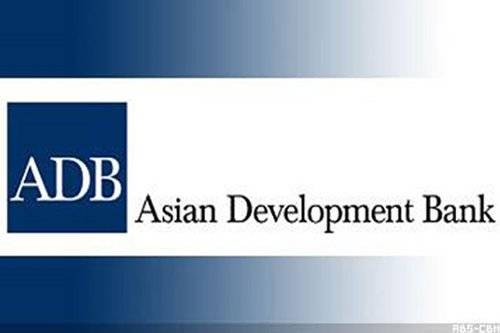ISLAMABAD - The Asian Development Bank (ADB) on Wednesday has expressed concerns over securing borrowing to contain the foreign exchange reserves that are depleting due to widening of current account deficit.
The spillover from higher investment expenditure is expected to widen the current account deficit. Securing adequate financing to contain the drawdown in foreign exchange reserves is a concern, the ADB noted in its new Asian Development Outlook (ADO) 2018. The current account deficit is expected to widen to 4.9 percent of GDP (around $16 billion) this fiscal year (FY2018). However, preliminary projection for the current account deficit in FY2019 is 4.5 percent of GDP, with somewhat slower growth but continued implementation of CPEC projects.
The current account remained under pressure in the first 8 months (July to February) of FY2018 as the deficit rose to $10.8 billion from $7.2 billion in the year-earlier period.
The deficit expanded on larger imports that widened the trade deficit despite a strong revival in exports. Remittances, the traditional off set to the trade deficit, grew by 3.4 percent in the period, reversing a decline a year earlier, but had only a limited impact on the current account. Filling the financing gap required a drawdown of $3.9 billion in foreign exchange reserves to $12.2 billion.
The ADB has noted that Pakistan's economy is projected to maintain strong growth in fiscal year (FY) 2018 as power supply in the country improves, manufacturing and crop harvests strengthen, and consumption expenditure and investments rise. The ADB projected gross domestic product (GDP) growth for Pakistan at 5.6 percent in FY2018 and 5.1 percent in FY2019 as fiscal challenges and wider current account deficits take effect.
Growth in FY2018 is being led by large-scale manufacturing, which expanded by 6.3 percent in the first 7 months (July to January) of FY2018 from 3.6 percent in the same period last year.
The provisional estimates for major winter crops suggest strong agriculture in FY2018 for a second year in a row, supported by increased cultivated area, fertilizer use, and credit. However, the wheat crop is expected to be slightly below target with reduced sown area. The report estimated that budget deficit might go to 5.8 percent of the GDP (Rs2 trillion) during FY2018 as against the target of 4.1 percent of the GDP.
The consolidated government budget for FY2018 envisages a fiscal deficit equal to 4.1 percent of GDP, much narrower than the 5.8 percent deficit in FY2017. Higher tax collection and further rationalization of current expenditure are expected to allow capital expenditure of 6.3 percent of GDP while meeting the fiscal deficit target.
Budget expenditure grew by 14 percent in the first half of FY2018 on increases in both current and development expenditures.
Tax collection rose by 16.4 percent, and total revenue including nontax revenue by nearly 20 percent. Higher tax revenue and $2.5 billion in proceeds from a $1billion sukuk and a $1.5 billion euro bond issued in November 2017 contained government domestic borrowing for budgetary support. If this momentum continues in the second half of the year, the budget deficit may be held below 5.8 percent of GDP.
Food inflation was 2.2 percent in the first 8 months (July to February) of FY2018, well below that in the year-earlier period, as abundant agricultural supplies held headline inflation to 3.8 percent even as nonfood inflation rose to 5 percent.
Currency depreciation and the transmission of rising international oil prices to the domestic market are expected to boost inflation in the second half of the year, generating average inflation at 4.5 percent for all of FY2018.
Inflation is projected to accelerate marginally to 4.8 percent in FY2019 reflecting increases in global oil prices and rupee depreciation against major currencies.
The central bank raised its policy rate by 25 basis points to 6 percent in its January 2018 monetary policy statement and maintained it at that level. While credit growth slowed in the first 8 months of FY2018 from the year-earlier period, demand pressures have kept imports high, and the resulting steady drawdown of foreign exchange reserves indicates a need for policy tightening. Other concerns were the rise in global oil prices and a firming outlook for higher interest rates in the US and global capital markets. In a departure from past policy, the central bank has permitted greater flexibility in determining the Pakistan rupee-dollar exchange rate since December 2017, and by the end of March 2018 the rupee had depreciated by 9.2 percent.
Flexibility in determining the rate will help mitigate eroded competitiveness indicated in recent years by appreciation in the index of the real effective exchange rate.
Exports revived to grow by 12.2percent in the first 8 months of FY2018. Large increases in food exports (mainly sugar and rice), readymade garments and knitwear, leather manufactures, and chemical and pharmaceutical products accounted for the bulk of the rebound. Despite new regulatory duties, imports grew by 17.3 percent in the first 8 months of FY2018, slightly faster than in the comparable period of FY2017 to meet sustained domestic demand and the continued large import needs of infrastructure projects reflected in double-digit growth in machinery, metals, and vehicles.
Imports of petroleum products were especially large because of higher prices, accounting for a third of the rise in imports. In the remainder of FY2018, the current account deficit should be reined in by the lagged effects of adjustments to regulatory duties, currency depreciation and credit tightening in January, and the favorable external environment for exports.
"Pakistan's economic prospects in the coming years remain positive if budget and current account deficits are reduced and exports are rejuvenated by improving the country's competitiveness," said Xiaohong Yang, ADB Country Director for Pakistan.
"Pakistan can maintain a stronger growth trajectory through domestic and regional stability, improving overall competitiveness, revitalizing public sector enterprises, as well as timely completion and effective use of infrastructure projects."






